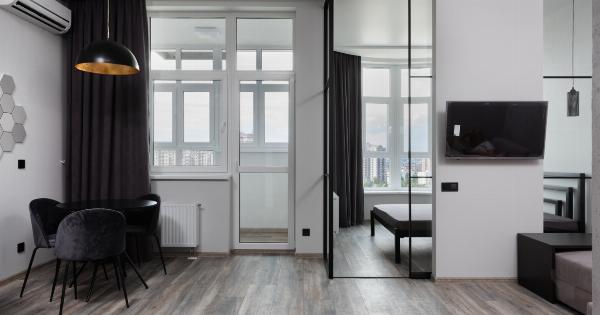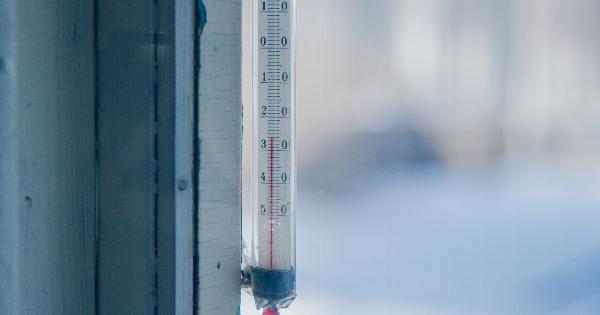Migraines are a common and debilitating type of headache that affects millions of people worldwide.
While the exact cause of migraines is still not fully understood, researchers believe that a combination of genetic, environmental, and lifestyle factors may play a role. One such environmental factor that has been consistently linked to migraines is weather conditions.
Weather Triggers
Many migraine sufferers report that changes in weather patterns can trigger or worsen their symptoms. Certain weather conditions have been found to be particularly problematic for those prone to migraines:.
Barometric Pressure
Changes in barometric pressure, which refers to the weight of the surrounding air, have been identified as a common trigger for migraines.
When the pressure drops rapidly, as often happens before a storm, it can cause blood vessels in the brain to expand and result in a migraine. Similarly, a sudden increase in barometric pressure can also trigger migraines in some individuals.
Temperature Fluctuations
Extreme heat or cold can act as a trigger for migraines. While the exact mechanism is not fully understood, it is believed that changes in temperature can cause blood vessels to constrict or dilate, leading to migraine attacks.
This is why some people experience migraines during heatwaves or when exposed to cold weather.
Humidity and High-Pressure Systems
Increased humidity, particularly in combination with high-pressure systems, has also been cited as a trigger for migraines.
High humidity can cause the air to feel denser, potentially affecting oxygen levels and leading to migraine attacks in susceptible individuals. Additionally, high-pressure systems have been associated with migraines, possibly due to their impact on barometric pressure.
Study Findings
Various scientific studies have sought to explore the link between weather conditions and migraine frequency. A study published in the journal Cephalalgia examined the impact of weather on migraines in 100 participants.
The researchers found that 64% of the participants reported weather as a trigger for their migraines. In particular, changes in temperature and humidity emerged as significant triggers in the study.
Another study published in Neurology, the medical journal of the American Academy of Neurology, investigated the weather-migraine connection in a larger sample size. The study involved analyzing data from over 7,000 patients who suffered from migraines.
The results showed that a decrease in barometric pressure preceded migraines in 50% of patients, whereas an increase in temperature triggered migraines in 25% of patients.
Research Limitations
While numerous studies have suggested a link between weather and migraines, it is important to acknowledge certain limitations in the research.
Migraines are a complex condition influenced by various factors, and weather triggers may differ between individuals. Additionally, individual perception and awareness of weather changes can vary greatly, making it challenging to establish a definitive cause-and-effect relationship.
Furthermore, weather patterns are highly variable across different regions, and what triggers migraines in one area may not be applicable elsewhere.
Factors such as altitude, latitude, and proximity to bodies of water can all contribute to local weather patterns and potentially affect migraine occurrence.
Managing Weather-Related Migraines
While it may not be possible to control or change the weather, there are several strategies that can help manage weather-related migraines:.
Keep a Migraine Diary
Tracking weather conditions alongside migraine episodes in a diary can help identify patterns and specific triggers. This information can then be used to anticipate and manage migraines more effectively.
Stay Hydrated
Dehydration can exacerbate migraines, so it is important to drink plenty of water, especially during hot and humid weather.
Avoid Excessive Heat or Cold
If extreme temperatures trigger migraines, it is advisable to stay indoors or take appropriate measures to regulate body temperature, such as using fans or wearing layers.
Create a Migraine-Friendly Environment
Individuals prone to weather-related migraines can create a soothing atmosphere at home by minimizing potential triggers like bright lights, loud noises, and strong odors. This can help lessen the impact of migraines.
Consider Medication
In certain cases, a healthcare professional may prescribe preventive medications or recommend over-the-counter pain relief to manage weather-related migraines more effectively.
Consulting with a healthcare provider is essential to determine the most appropriate course of action.
Conclusion
While the connection between weather and migraine frequency remains a subject of ongoing research, numerous studies have shown that weather conditions can influence the onset and severity of migraines in susceptible individuals.
Understanding these triggers and implementing effective management strategies can help individuals navigate and cope with weather-related migraines more successfully.




























